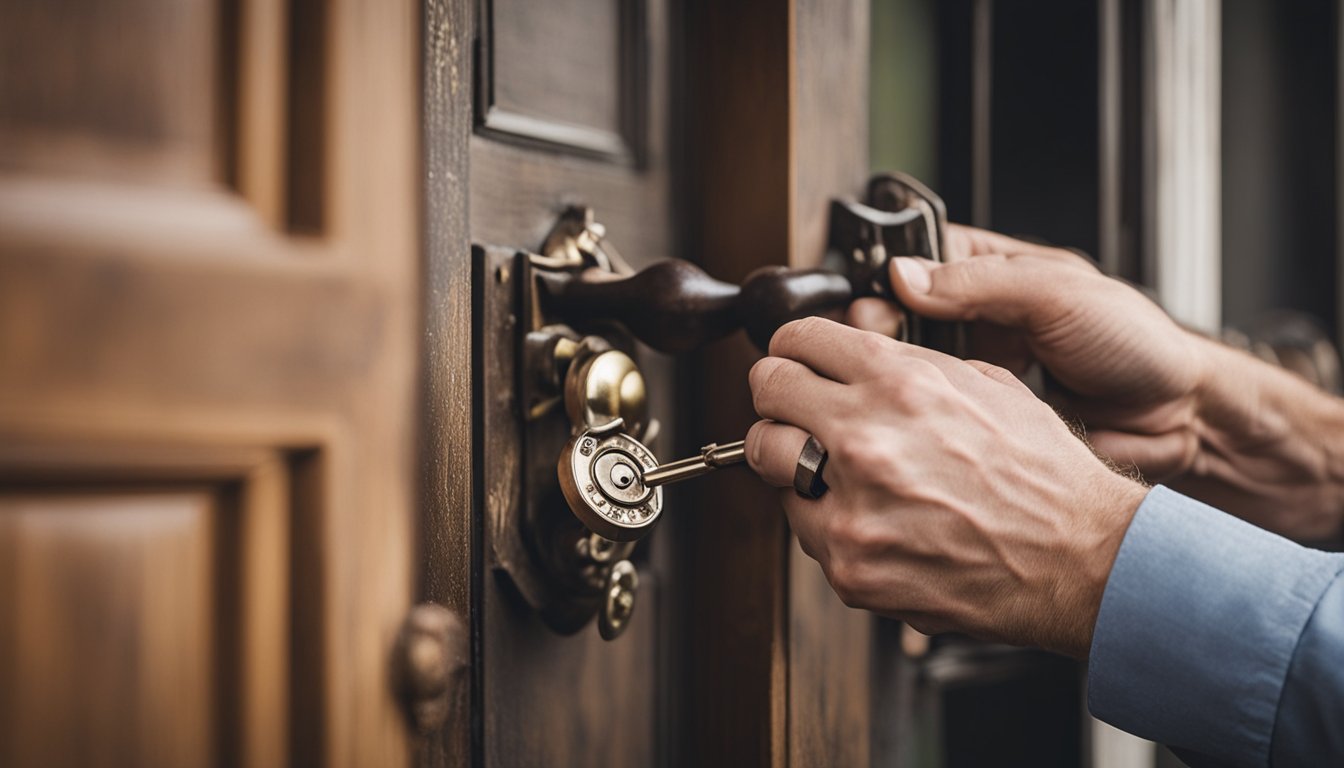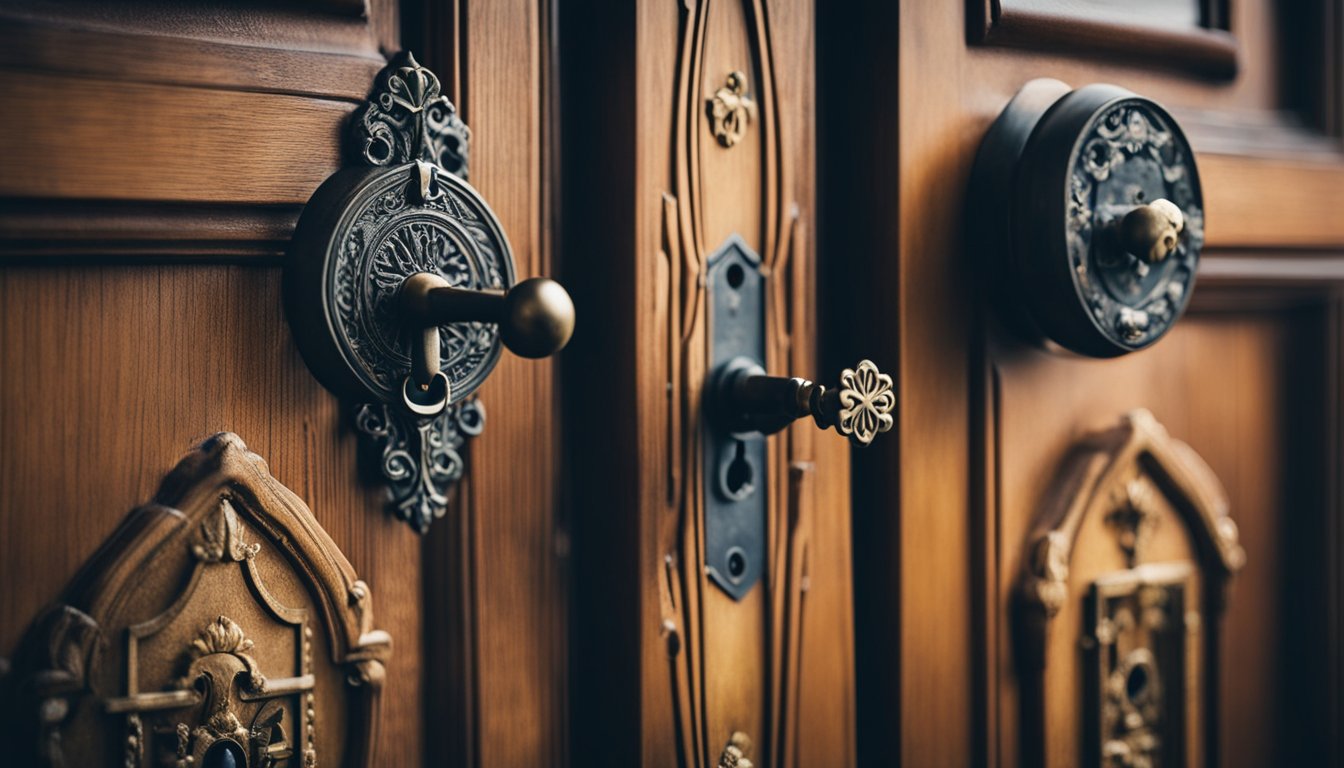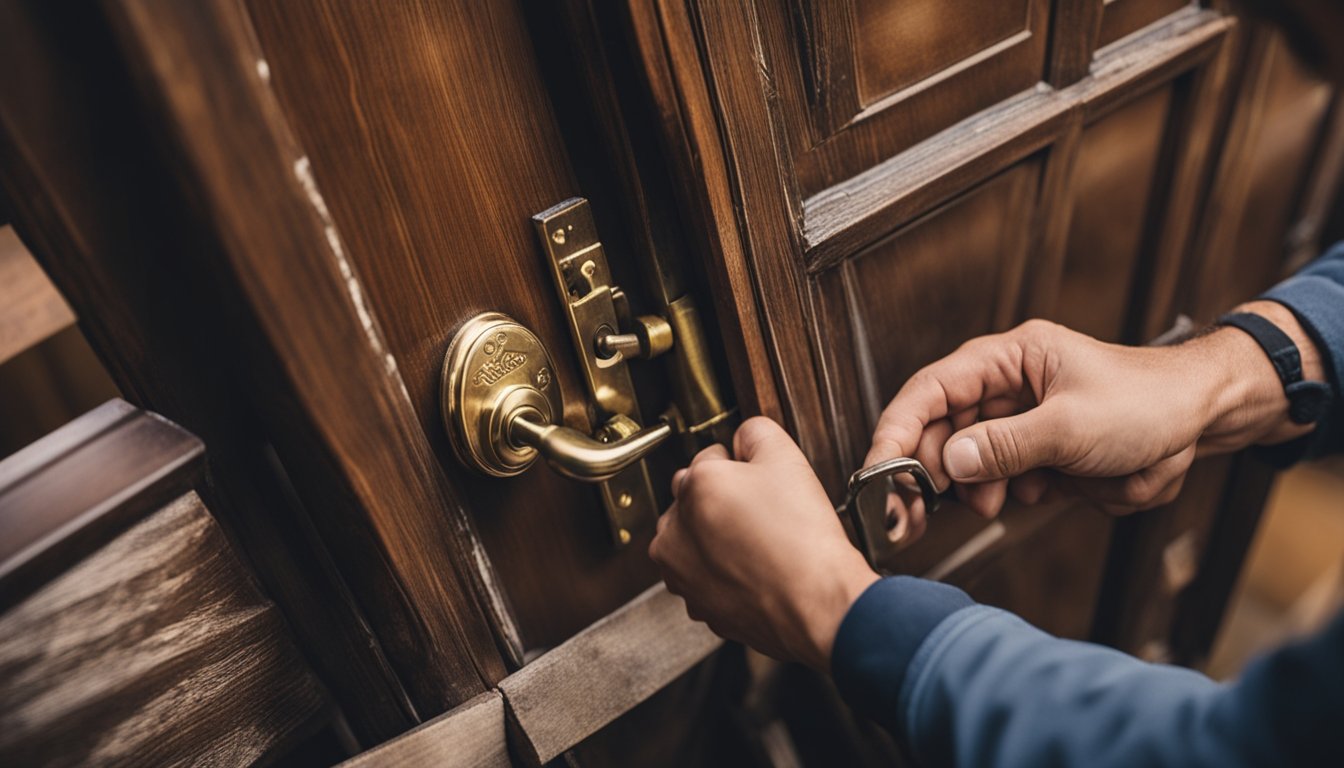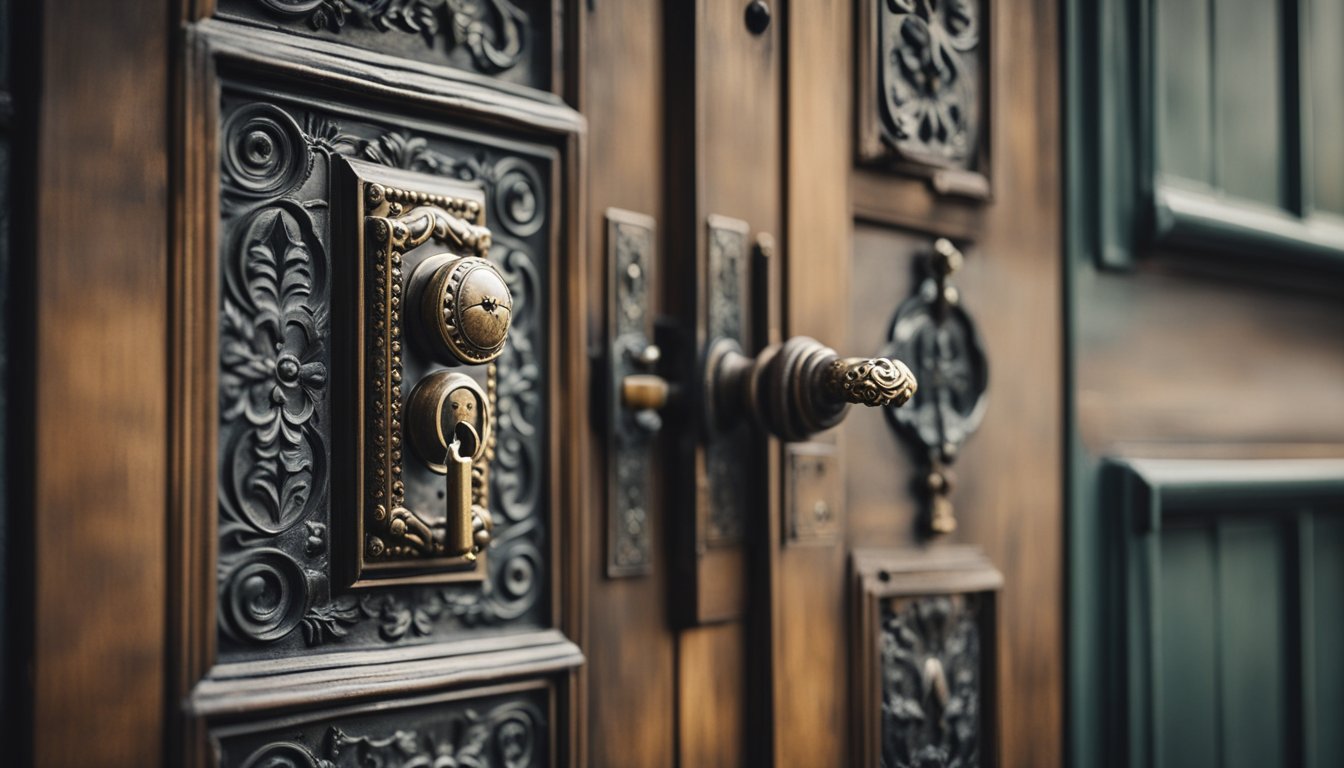Late updated: 16 Nov 2024 15:11
Written by: Elena Prescott
Customising Locks for Historic UK Homes: A Guide to Preservation and Security
Customising locks for historic UK homes requires a delicate balance between maintaining the aesthetic integrity of the property and ensuring modern security standards. Our goal is to enhance security while preserving the architectural heritage that makes these homes unique. Often, period homes come with original locks that not only provide a glimpse into the past but also present challenges in security due to outdated mechanisms.

Incorporating modern locking systems into these older structures must be done thoughtfully. We must consider the compatibility of new technology with antique hardware, ensuring that any modifications are sensitive to the original design. It is not just about installing new locks; it’s about preserving history while protecting against current vulnerabilities.
Choosing the right approach involves understanding both the historical value of antique locks and the advances offered by modern technology. We explore how conservation methods can be combined with cutting-edge security measures to allow these beautiful homes to stand the test of time whilst providing peace of mind to their inhabitants.
Key Takeaways
- Balance security with historical preservation.
- Use modern technology sympathetically with antique hardware.
- Enhance security without compromising integrity.
Understanding Locks in Historic UK Homes

Historic UK homes offer a distinctive blend of architectural beauty and functional design. In these homes, locks play both an aesthetic and practical role. Exploring the evolution of their mechanisms, the craftsmanship involved, and the various types of locks used can reveal much about their heritage and purpose.
Evolution of Locking Mechanisms
Over the years, locking mechanisms have transformed significantly. During the Victorian era, security concerns led to innovations in lock design. Mortice locks, often found in older homes, became popular due to their enhanced security features.
Parallel developments in padlocks provided portable security, while rim locks offered simpler alternatives for interior doors. The progression from basic latches to complex locking mechanisms reflects both advancing technology and the growing need for security.
Materials and Craftsmanship
Craftsmanship plays a crucial role in the beauty and functionality of historic locks. Brass and bronze are often favoured for their durability and aesthetic appeal. Ironmongery, including iron components, adds a rustic charm to these vintage pieces.
The detailed design work showcases the skills of locksmiths from bygone eras, highlighting their ability to blend security with art. Restoration services today must respect these original materials and methods to preserve historical integrity, ensuring that both new and antique locks serve their intended purpose while matching the architectural style.
Types of Vintage Locks
UK historic homes feature a variety of lock types, each serving specific roles. Mortice locks, inserted into the door itself, offer robust security. Rim locks sit on the door's surface and are more decorative.
Padlocks provide movable security options, while cabinet locks secure cupboards and drawers. Together with traditional latches, these lock types form a comprehensive security system that respects architectural heritage while addressing modern security needs. Understanding these types helps us appreciate the balance between historical authenticity and contemporary functionality in historic homes.
Enhancing Security While Preserving Integrity

Balancing security with the preservation of historic homes involves thoughtful upgrading without compromising their original charm. We explore the sensitive integration of modern features with traditional aesthetics and skilled restoration techniques.
Balancing Modern Security with Aesthetic Conservation
Striking a balance between preserving historical authenticity and implementing modern security solutions is crucial. Choosing discreet security systems like minimalistic door handles, hinges, and modern locking mechanisms can enhance safety without altering the home's exterior.
For instance, keyless entry systems may be hidden within existing structures to maintain visual cohesion. It's also possible to customise security systems that match the period style, offering protection without clashing with aesthetic elements. This approach ensures both security and the conservation of historical integrity.
Incorporating New Technology Tactfully
Introducing smart locks and access control systems requires careful consideration in historic homes. These technologies can be integrated subtly to preserve a building's character. For example, sensor-based systems and deadbolts can be concealed inside doors or façades.
Using wireless technology eliminates the need for extensive wiring, preventing damage to delicate interiors. Our goal is to provide advanced protection while respecting the original architecture. This nuanced approach allows for seamless function alongside architectural beauty, keeping safety paramount.
Expert Restoration and Repairs
Full restoration and repairs are often necessary to integrate new features effectively. Engaging skilled locksmithing services ensures that restoring or replacing keys, door handles, and locks is performed with precision. These experts help identify suitable replication materials and methods.
Consideration of the original mechanics is vital in maintaining historical value. Opting for a restoration service that specializes in antique lock conservation ensures the integrity of the home's features. We carefully rebuild and refurbish elements, focusing on enhancing usability while honoring historical craftsmanship.
Frequently Asked Questions

When refining locks for historic UK homes, it is essential to consider several unique aspects. These range from maintaining the architectural integrity of vintage doors to complying with current safety standards.
What considerations are needed when selecting locks for doors in historic UK properties?
Selecting locks involves balancing security with aesthetic preservation. We consider the age and design of the property, ensuring that any new locks complement existing architectural features. It is crucial to choose locks that offer adequate security without altering the property's historical charm.
How much does it typically cost to replace or customise locks in period UK homes?
Costs can vary significantly based on complexity and materials. Typically, replacing or customising locks in period properties may range from £100 to £500 per door. Intricate designs and high-security features can raise prices further, influenced by craftsmanship and specific requirements of the home.
What types of locks are commonly found in historic UK houses?
Historic UK homes often feature mortice locks, rim locks, and lever locks. These traditional mechanisms are known for their robust build and resistance to forced entry. Each type has its own unique history and application, tailored to the era and style of the property.
Can modern locking mechanisms be integrated with vintage doors without compromising their original aesthetics?
Yes, modern mechanisms can be integrated while preserving aesthetics. We employ discreet hardware solutions that blend seamlessly with existing designs. Skilled craftsmen ensure that modern adaptations do not obscure historical details, thus maintaining the property's original character and appearance.
What should I know about the British standards for door locks in the context of heritage conservation?
British standards emphasise both security and heritage conservation. We must comply with specific BS3621 specifications for locks, ensuring they meet insurance requirements. At the same time, compatibility with historical features is crucial, demanding a balance between modern functionality and preservation principles.
What vintage door lock mechanisms are compatible with Victorian-era homes?
Victorian-era homes commonly used five-lever mortice locks and brass rim locks. These are prized for their durability and match well with typical Victorian aesthetic features. When restoring or replacing these locks, it's vital to select mechanisms that embody the period's intricate design without compromising on security.
